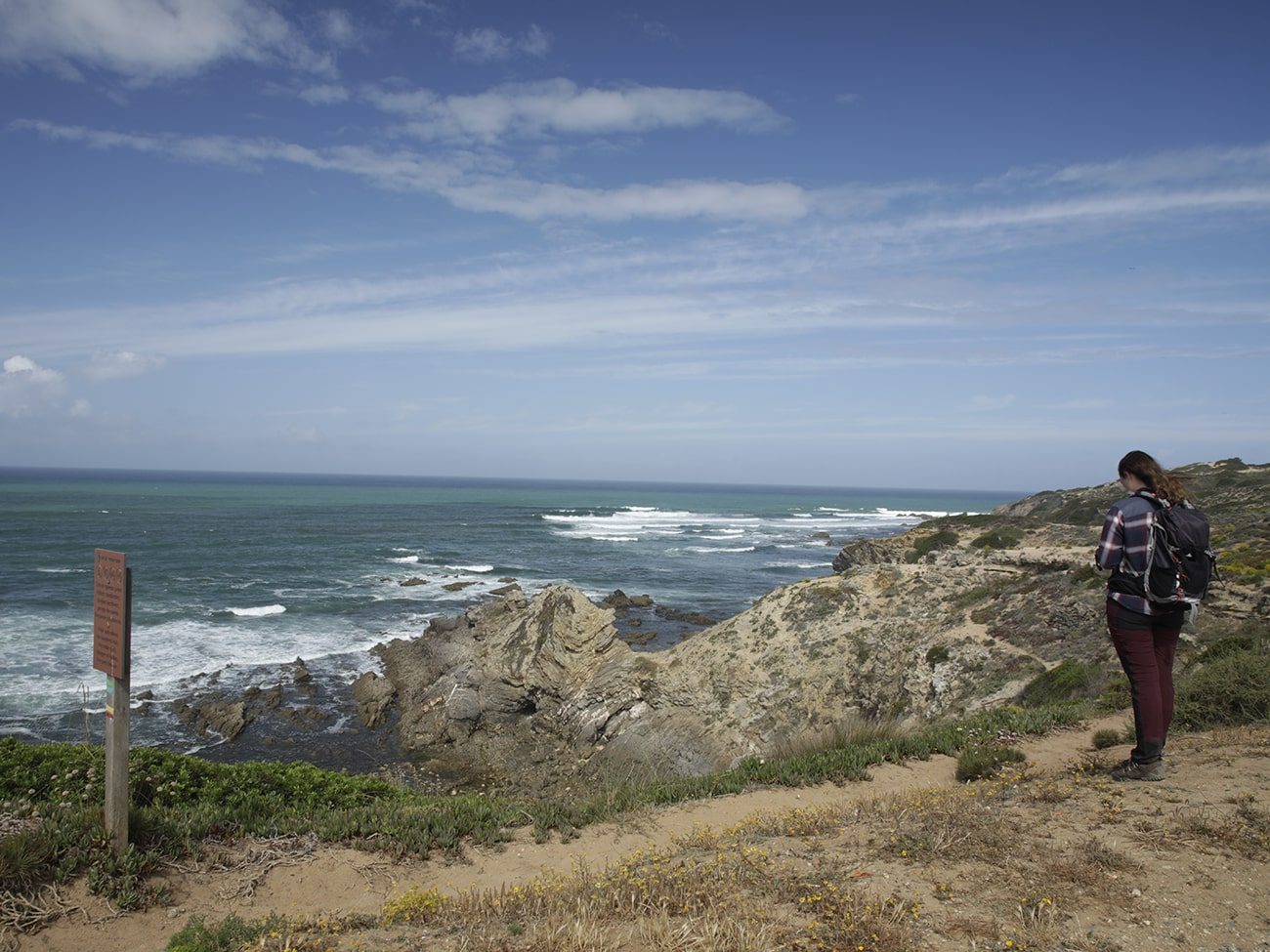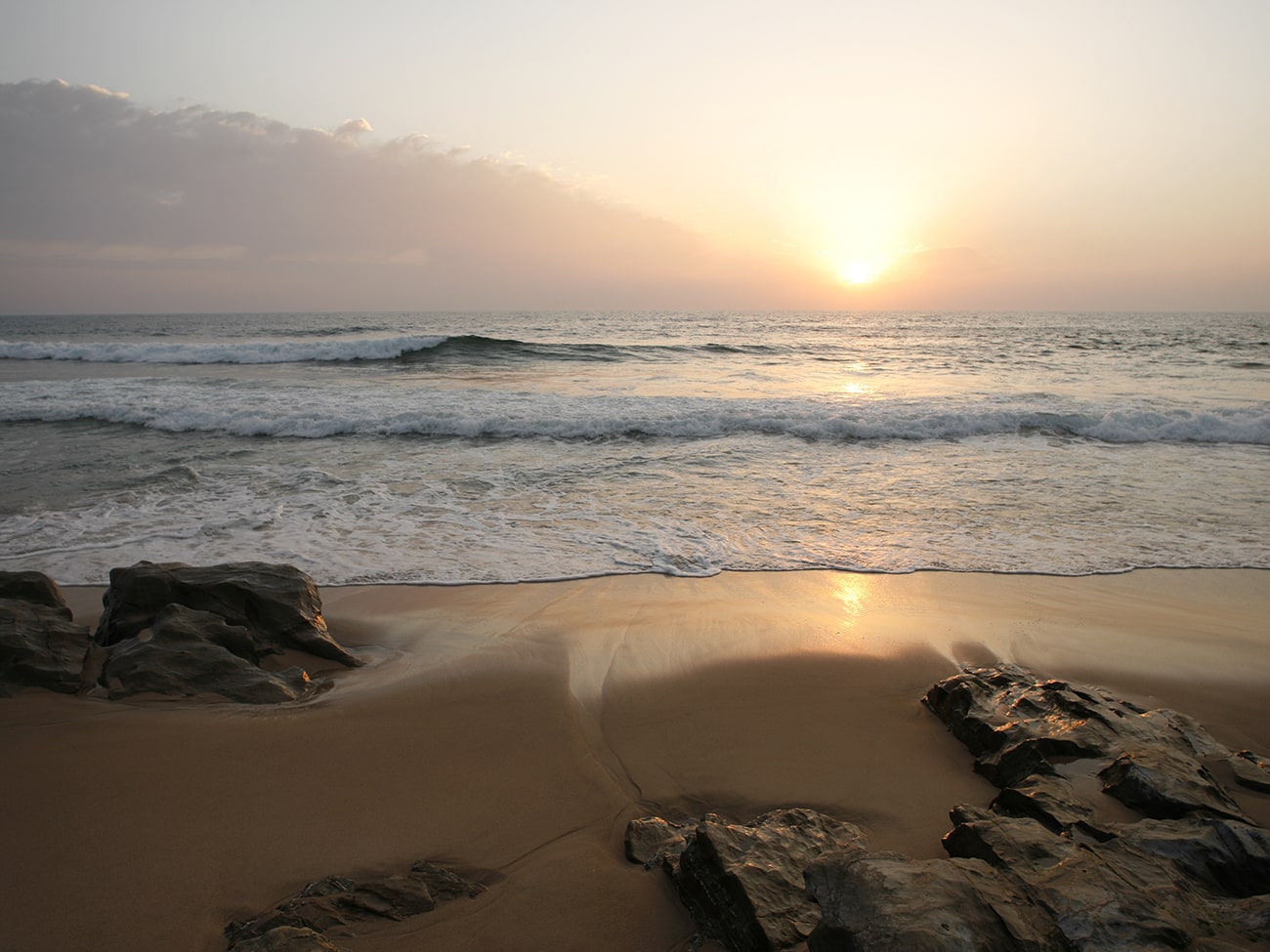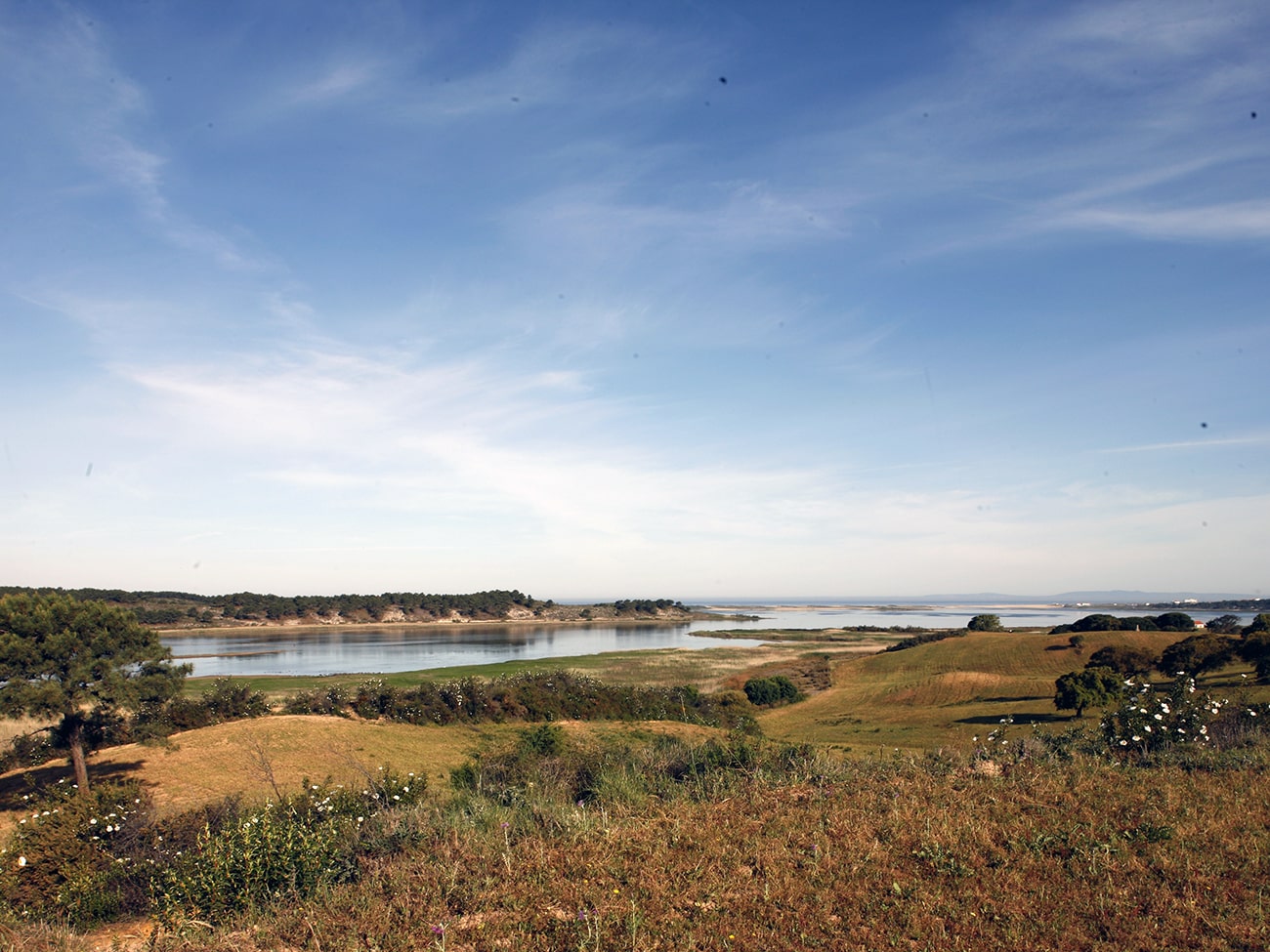The Rota Vicentina has a total of 400 kilometers of hiking trails that run along the coast from the Alentejo to the Algarve.
While the coastal trails are truly breathtaking, there are also many paths stretching through the countryside and the hills further inland. All these routes deserve to be enjoyed at walking pace.
The two major routes (the Historical Way and the Fishermen’s Trail), together with the Circular Routes, offer a varied network of routes, capable of satisfying the needs and expectations of any experienced hiker, families who can keep pace with the children, or the merely curious who come to explore this region.
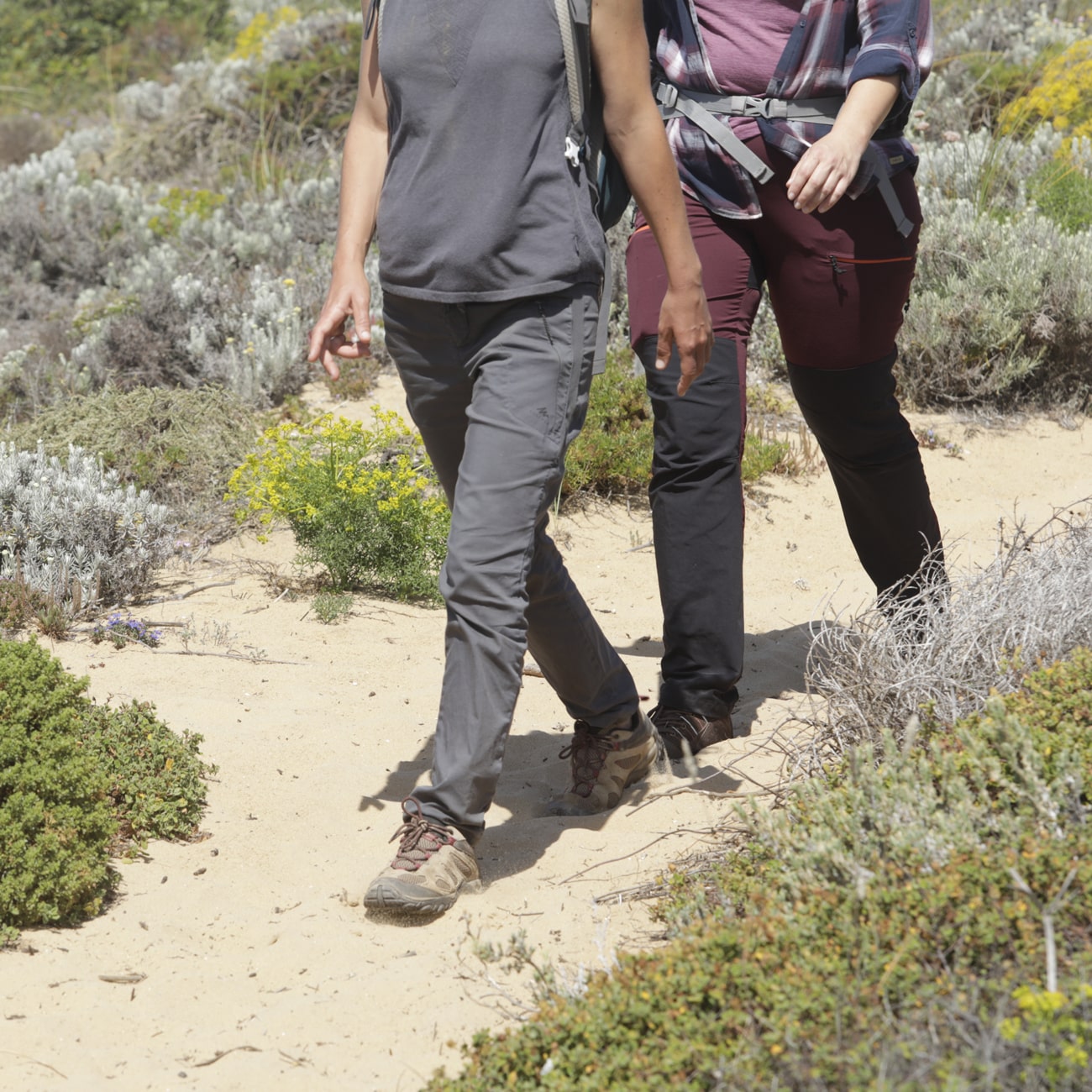
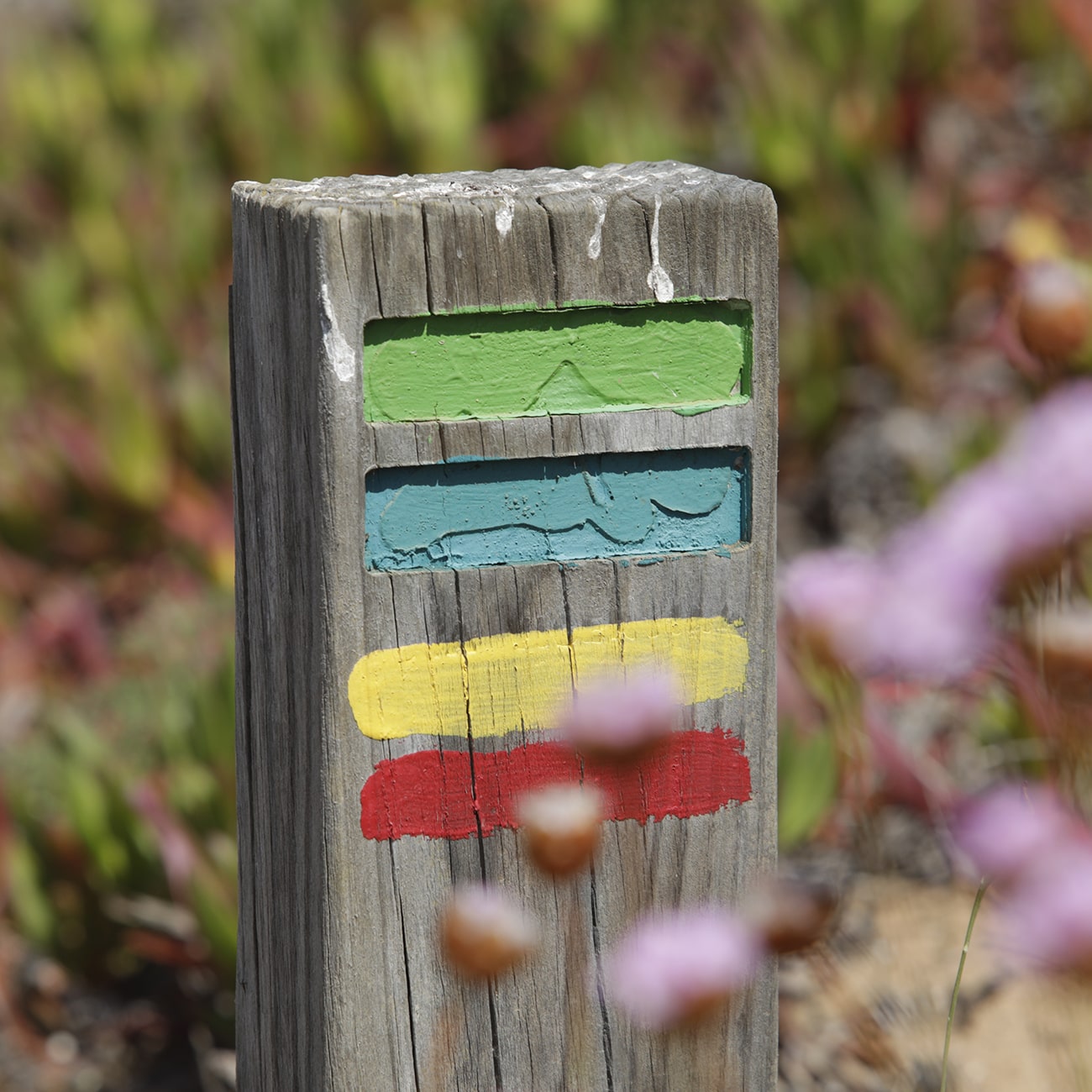
The Historic Route
With a low general degree of difficulty and a total of 263 km of rural paths through the lesser-known side of the region, this route includes a total of 13 stages to do slowly, to the taste of life in the countryside. It takes you through the main towns and villages on an itinerary with several centuries of history.
The sections wind through landscapes of cork oak forests, mountains, valleys, rivers and streams, on a journey through time, local culture and nature.
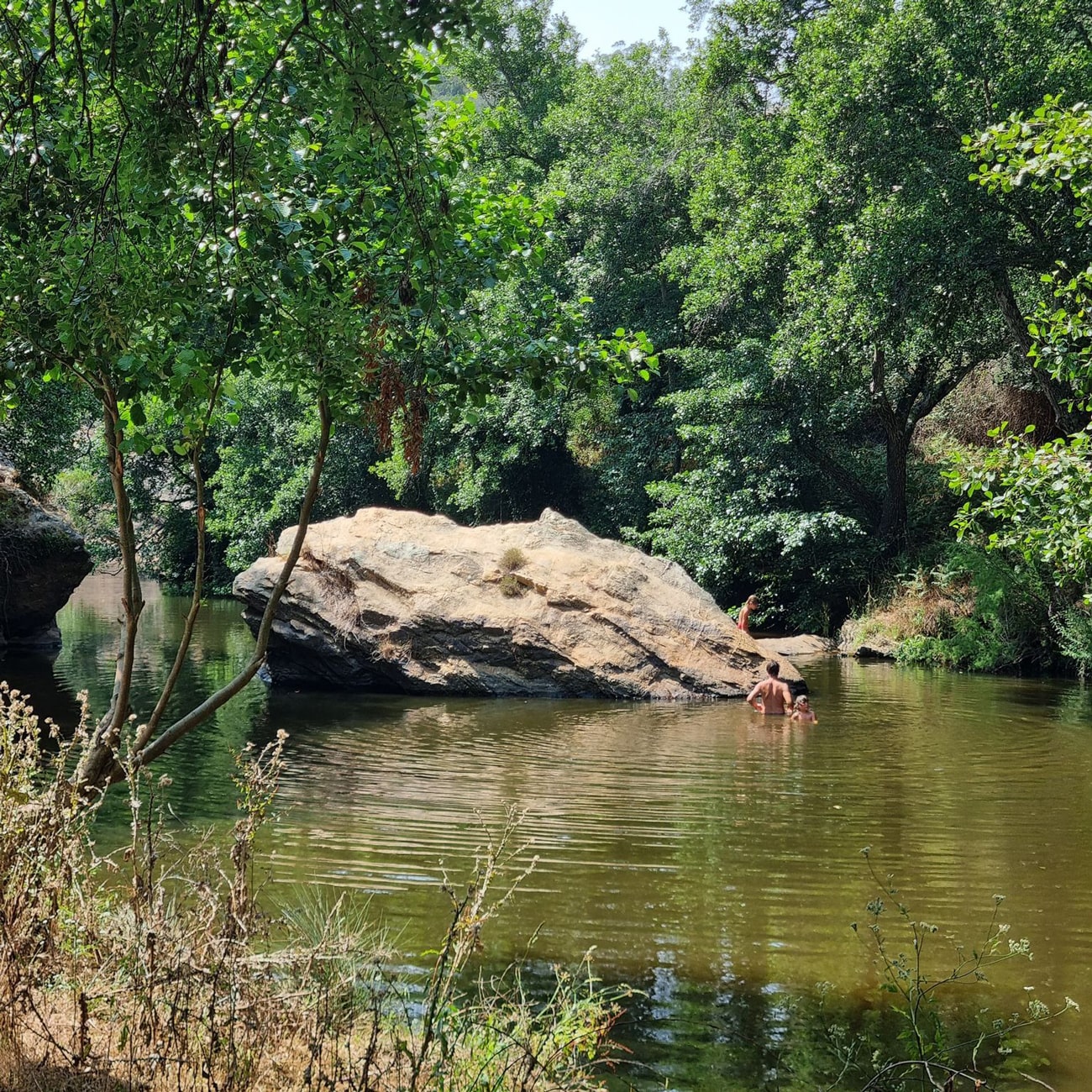
S. Luís – Odemira
This moderately difficult trail is 24.7 km long and can be completed in an average of 6:37 hours. As it is a circular route, you can set off either to the north, in S. Luís, next to the bus stop on the N120 road, or to the south, in Odemira, at the traffic circle with the iron sculpture, near the river.
This is the water stage, where you discover a different Alentejo, green and vibrant with life, with refreshing peaks and streams, the Ribeira do Torgal as the protagonist and a living forest, with an abundance of valuable species that cover the banks of the water lines.
The first part of the route is through farmland, dehesas and scrubland. Birds and mammals abound in this territory where man and wild animals coexist peacefully. wild boar is common in this region. Insectivorous birds fly restlessly from tree to tree, carrying out a free and effective clean-up of forest pests.
The second half of the route follows part of the beautiful Torgal stream, the main tributary of the Mira. Pego das Pias is a uniquely beautiful place where you want to stay, whether you’re in or out of the water. Dozens of aromatic and medicinal plants can be found on the banks and in the surrounding scrubland.
The arrival in Odemira is made with views over the River Mira, which meanders and adorns the landscape as it flows towards Vila Nova de Milfontes.
Fishermen’s trail
The Fishermen’s Trail includes a total of 13 stages and 226.5 km and is probably one of the best coastal trails in the world. It follows its route side by side with the sea, using the access paths to the beaches and fishing grounds. It is designed for walking along the cliffs, where there is plenty of sand and no physical demands.
However, any hiker who crosses it will tell you it’s worth the effort. Despite the challenge, there is immense pleasure to be found in the contact with the wind and the sea, the raw harshness of the coastal landscape and the persistent presence of wild nature.
The best trails on this route are:
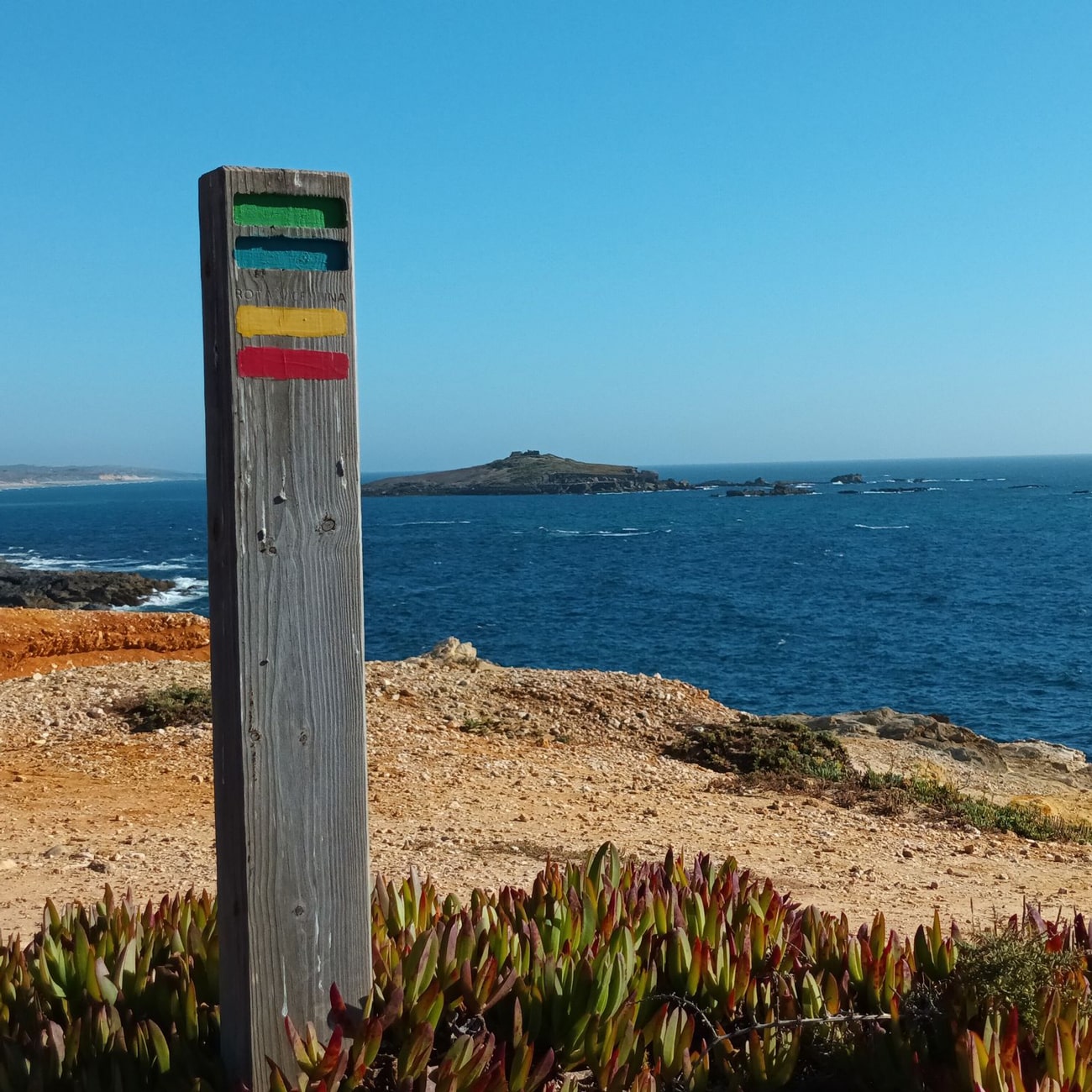
Porto Covo – Vila Nova de Mil Fontes
Having spent the previous night exploring the picturesque village of Porto Covo, it’s time to hit the road for a somewhat challenging stage due to its length (20 km) and surface (it’s always sand). However, it is the trail that leads to the region’s most famous beaches, such as Pessegueiro Island, Malhão and Aivados.
The diversity of beaches on this stage is what makes it so special. You’ll even find beaches with fresh water spouts (from the mountains) which give Vila Nova de Mil Fontes its name.
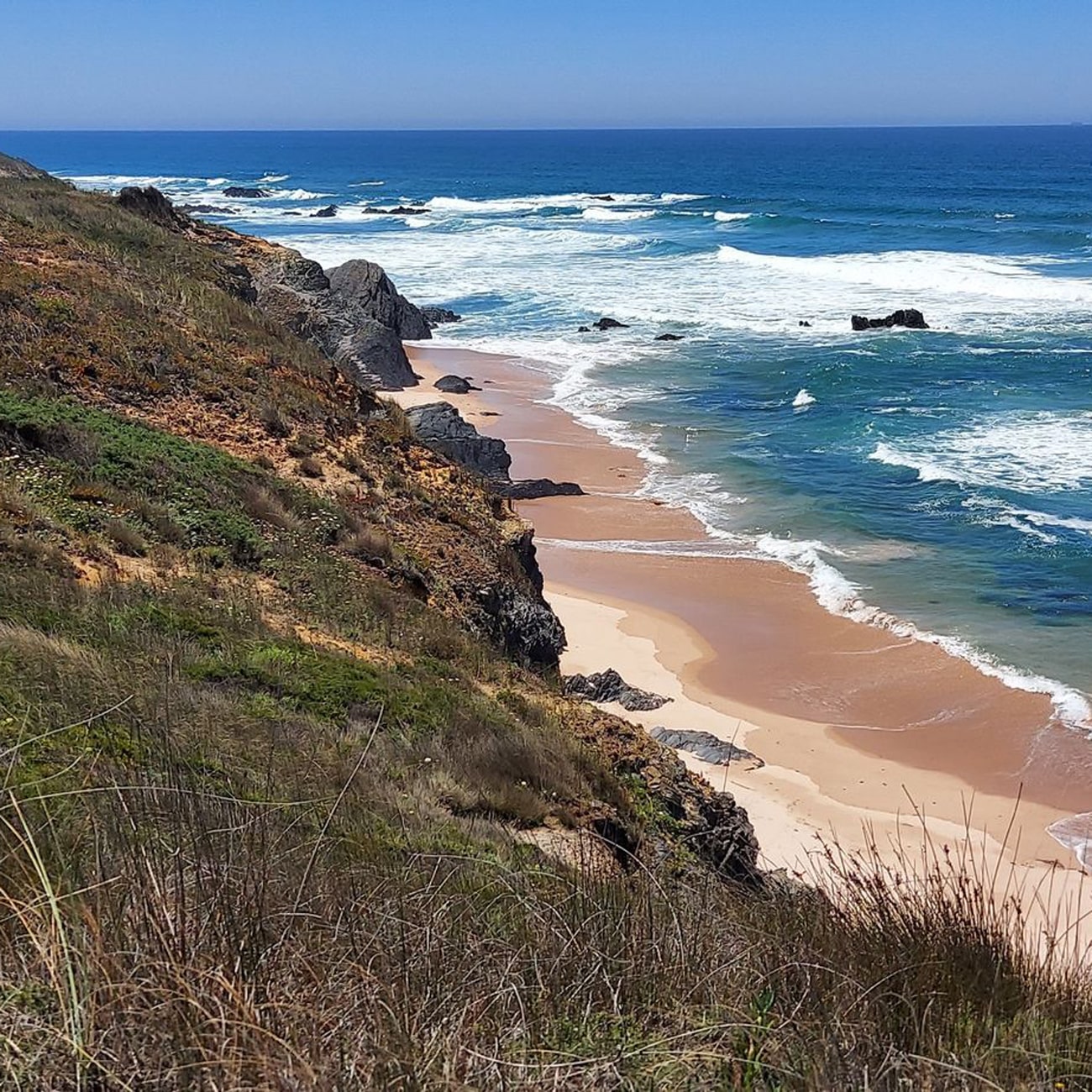
Vila Nova de Mil Fontes – Almograve
Then, crossing the River Mira, the adventure continues for another 16 km to Almograve.
After crossing the bridge (and if you want to save your legs a bit, you can cross the river by boat) you arrive at one of the most beautiful beaches in Portugal – Praia das Furnas.
At this stage, in addition to all the natural beauty, you can also observe the swifts, which, depending on the season, can be in great turmoil, nesting or feeding their young.
Circular routes
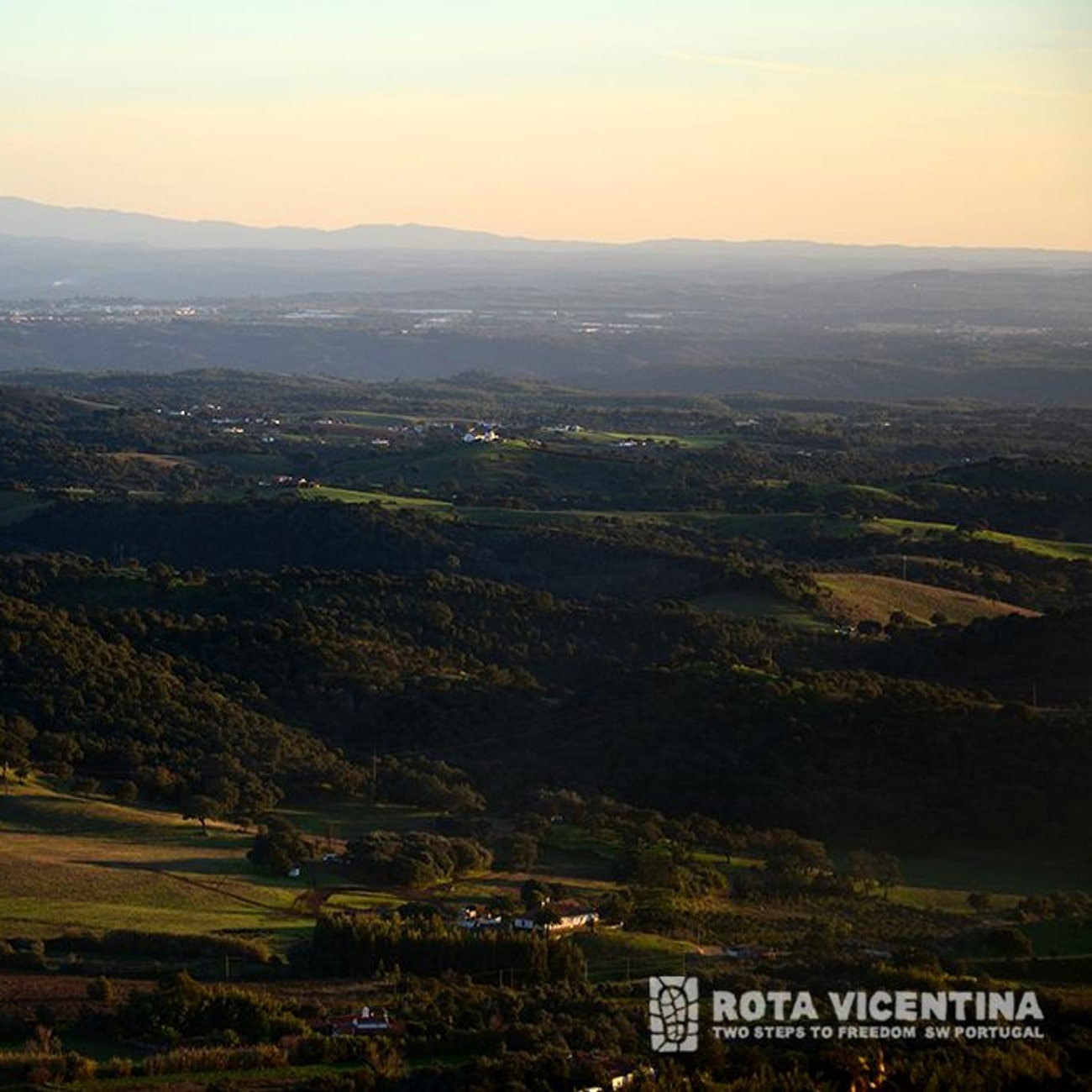
Gardens of S. Luís
This 3.8 km route is easily done in just one hour. It starts in S. Luís, next to the bus stop on the N120 road, in Largo dos Caeiros (central traffic circle).
It’s the ideal trail both for those new to the pleasure of walking and for more practical people for whom time is short and only the accessible is doable.
A path that passes through the vegetable gardens, farms and orchards that populate the picturesque village of São Luís, with the strawberry tree as a constant presence and the characteristic laurel hedges flanking the route. It’s a good time to pick a few branches, dry the leaves and use them to cook the most delicious dishes.
The magic happens when you reach the cork oak forest. But throughout the trail, the village of S. Luís is the protagonist. Its wealth of resources is such that, in the past, it was the main supplier to the town of Vila Nova de Milfontes, and today it is recognized for the recovery of the use of rammed earth in construction techniques.
If you want to go further, add 4 km to the route, taking the opportunity to climb the Serra de São Domingos.
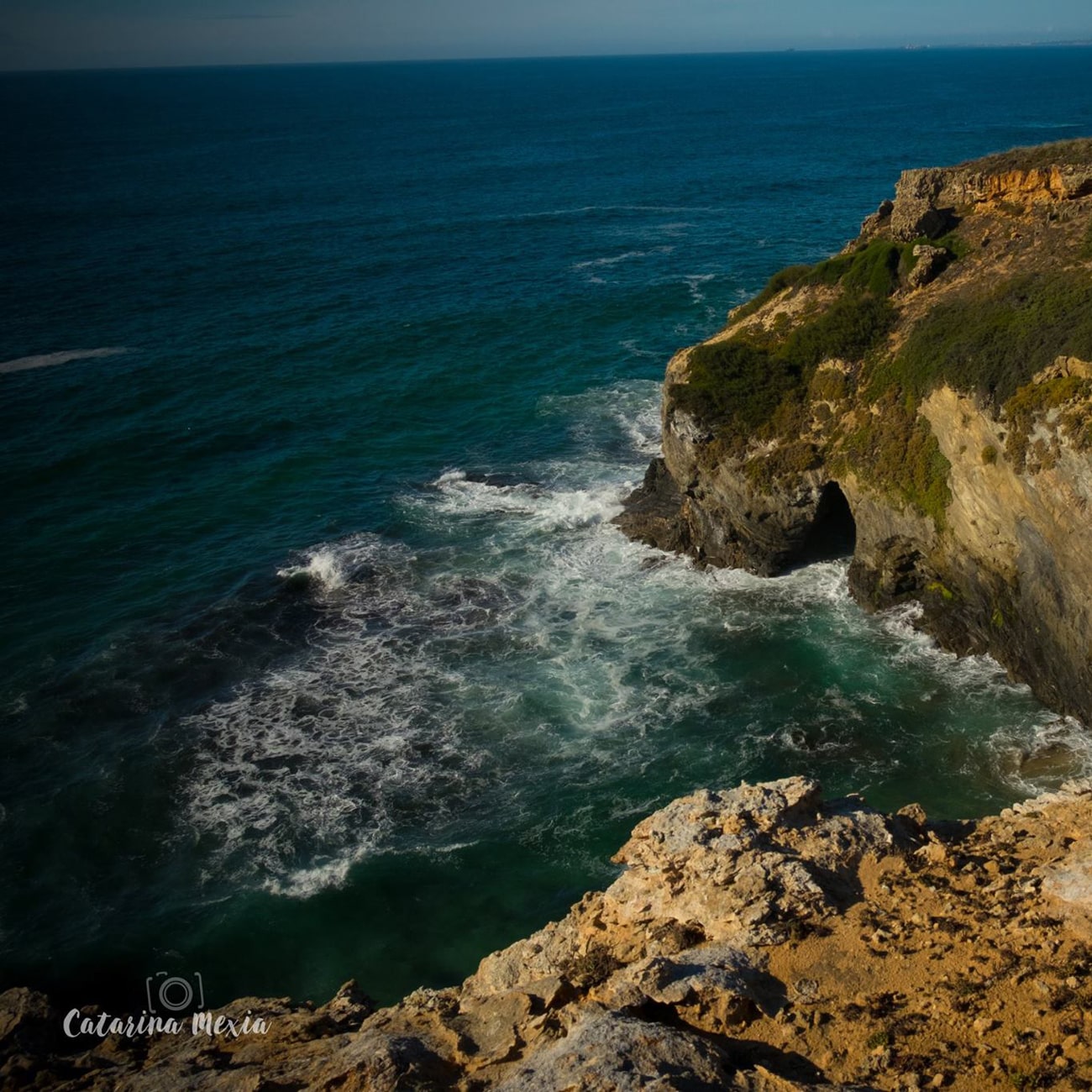
Mediterranean ponds (12 km)
This moderate-difficulty route, which takes approximately 2h45, combines a beautiful stretch of the Fishermen’s Trail with one of Europe’s most remarkable and unique freshwater habitats, the Mediterranean temporary ponds, which are home to countless rare and endangered species.
Both the dune scrub and the wetlands cross emblematic habitats. In spring, you can see almost all the endemic plants of the southwest coast of Portugal just by walking this stretch.
Aromatic bushes sprout in the undergrowth. The seasons can be read in the flowers that bloom. Day and night, a huge variety of birds, rabbits, badgers, foxes and mongooses populate this place. The ponds are home to tiny creatures such as fairy shrimps, shell shrimps and chirping shrimps, and almost every species of amphibian found in Portugal can be found.
Like all Circular Routes, this one is fully signposted in both directions. It can be started either at the Interpretation Center for the Mediterranean Temporary Ponds of Southwest Alentejo (on the road between Brunheiras and Ribeira da Azenha, at the bend that leads to Malhão beach, following the dirt track on the left) or to the north of Vila Nova de Milfontes, next to the Porto das Barcas restaurant.

